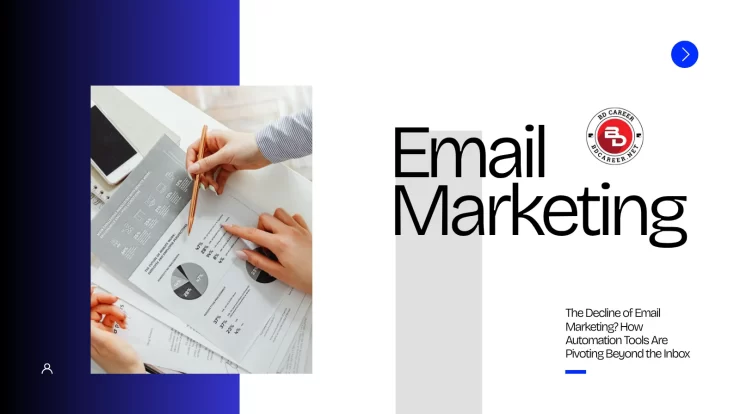
Being able to analyse and make sense of complicated datasets is more important than ever in a time when data drives decisions in almost every field. But knowing statistics or how to program is no longer enough to be a good data analyst or scientist. It’s all about learning how to use the correct tools to work quickly, accurately, and together.
There are now a lot more data science software programs available than there were in 2025, and they are useful for people of all skill levels. There is a platform that is perfect for you, whether you are an accomplished coder or just starting to learn about visual analytics. This post goes into detail on the best data science tools that every analyst should know about this year. It focuses on platforms like RStudio, Jupyter, RapidMiner, and others that are changing the way analytics is done.
Contents
Main Factors to Consider When Choosing Data Science Tools
It’s important to know what makes a data science tool work well before you choose one. There are several rules that apply to everyone, even though personal taste and project needs are important:
- Easy to Use: An interface that is easy to use can make learning a lot easier.
- Integration: Tools should be able to integrate with standard programming languages like Python or R and other software platforms.
- Visualisation Capabilities: To tell a good story with data, you need strong charting and dashboard tools.
- Performance and Scalability: Can the tool efficiently handle large amounts of data and complex calculations?
- Community and Support: Many users and comprehensive documentation can help you solve problems and make progress more efficiently.
Taking all of these things into account, these are the best tools that will be available in 2025.

Best Data Science Software for 2025
RStudio
Overview:
In short, RStudio remains one of the top tools for academic research and statistical analysis. RStudio is a sleek, integrated development environment (IDE) made just for the R programming language. It is great for statistical computing.
Strengths:
- Very good at econometrics, time series analysis, and statistical modelling
- . ggplot2 and shiny are two powerful visualisation tools that may be used to make interactive dashboards.
- R Markdown makes it easy to reproduce results.
Best For: Data scientists in the government, healthcare, research, and statistics fields.
Update for 2025: RStudio has added more cloud-based collaboration features and now works better with Python workflows using reticulate, making it more useful for hybrid projects.
Jupyter Notebook/Lab
Overview: Jupyter has evolved from a basic notebook interface to a comprehensive development environment with JupyterLab, a must-have in the Python ecosystem.
Strengths:
- You can run programs in Python, R, and Julia live.
- You can easily combine text, code, charts, and markdown in one notebook.
- Extensions let you debug, use Git, and work together in real time.
Best For: Prototyping machine learning, cleaning up data, and telling stories with data that are ready to be shown.
Update for 2025: JupyterLab now has better real-time collaboration tools, AI code suggestions, and faster rendering for big datasets.
RapidMiner
Overview: RapidMiner is a strong platform that doesn’t require coding for people who like to drag and drop things. It supports the whole analytics process, from preparing the data to deploying the model.
Strengths:
- Easy model comparison and visual process design
- AutoML capabilities that make it easy to construct models
- Performance that is good enough for businesses, with cloud solutions that can grow with your needs
Best For: Business analysts, people who don’t know how to code, and teams in big companies that need quick fixes.
As of 2025, RapidMiner has built-in AI explainability tools and better ways for hybrid teams of programmers and non-coders to work together.
KNIME
Overview: KNIME is an open-source platform that enables you to create, analyse, and model data using modular, visual workflows. It competes directly with RapidMiner; however, it has greater customisation options and support for open source.
Strengths:
- Great at transforming and handling data
- Works with Python, R, and Spark
- More advanced features for data visualisation and automation
Best For: Cross-platform integration, customer segmentation, and complicated data engineering jobs.
Update for 2025: KNIME’s new cloud hub enables analysts to easily share components with teams worldwide and run workflows on a large scale.
Apache Zeppelin
Overview: Apache Zeppelin is gaining popularity as an alternative to Jupyter in business settings. It works with many languages and large data frameworks, such as Apache Spark.
Strengths:
- You can use Scala, SQL, Python, and other languages in the same notebook.
- Works perfectly with Hadoop, Spark, and Kafka
- Good for big, real-time analytics
Best For: Data engineers, DevOps teams, and analysts who work with distributed systems.
Update for 2025: Better support for Kubernetes-based deployments and stronger authentication features for business security.

Orange Overview
Orange is a free, open-source platform that is easy to use and ideal for teaching, experimentation, and quickly creating prototypes. It makes machine learning jobs easier by using widgets.
Pros:
- Visual programming with drag-and-drop capabilities
- Tools for classification, clustering, and text mining
- Great for learning and quick testing
Best for: Teachers, students, and those just starting to learn data science.
Update for 2025: Orange now allows you to tune models in real-time and works better with Python modules from other sources.
SAS
Overview: SAS (Statistical Analysis System) has been the premier tool for analysing data in regulated fields such as finance, insurance, and healthcare for a long time.
Strengths:
- Very secure and accurate for mission-critical data
- Well-developed modelling, forecasting, and optimisation skills
- Very good at following industry requirements
Best For: Big businesses and industries that need proven software, like banking and pharmaceuticals.
2025 Update: SAS has updated its interface, now allowing you to develop models in Python through its Viya platform, making it more flexible.
Honourable Mentions
- Google Colab: Works seamlessly with Jupyter and is completely cloud-based, making it ideal for collaborating on Python projects with others and supporting GPUs and TPUs.
- Spyder: A scientific Python IDE made for engineers and researchers, featuring capabilities for exploring variables and troubleshooting.
- Tableau Public and Power BI: These are mostly visualisation tools, but they are very important for delivering the last-mile story of any data project.
Picking the Best Tool for Your Needs
There are distinct uses for each data science tool, and the best arrangement for you can require employing multiple of them at the same time. Here’s a basic rule:
User Type | Recommended Tools |
Beginner Analysts | Orange, RapidMiner, Google Colab |
Statistical Experts | RStudio, SAS |
Python Coders | Jupyter, Spyder |
Business Users | KNIME, Tableau, Power BI |
Big Data Engineers | Apache Zeppelin, JupyterLab + Spark |
Educators & Students | Orange, Google Colab, Jupyter |
When you pick tools, think about:
- Technical background: Coders might like Jupyter or RStudio more, whereas people who don’t code might like RapidMiner or KNIME better.
- Project complexity: How complicated the project is. Modular tools like KNIME or Zeppelin may be helpful for complex machine learning projects.
- Needs for deployment: Make sure your tools provide cloud and containerised choices if you’re delivering models on a large scale.

What will happen next in data science software
The world of data science tools keeps changing. In 2025, several important trends are:
- AI-Assisted Development: IDEs are adding tools like GitHub Copilot and Amazon CodeWhisperer to speed up authoring and fixing code.
- Cloud-Native Platforms: Cloud-based environments, like Google Colab and RStudio Cloud, are becoming the norm. They let you access, work together, and scale right away.
- Integrated Governance: More and more tools now have features for data lineage, access controls, and compliance to keep up with stricter privacy laws.
Conclusion
The correct data science software can make it much easier for you to look at, analyse, and talk about data. Analysts who know how to use platforms like RStudio, Jupyter, RapidMiner, and others will be able to stay competitive, efficient, and useful in 2025. As technologies change, it’s just as important to stay up to date and flexible as it is to improve your programming or statistical skills.
Now is the time to construct a modern, well-rounded data science toolkit, whether you’re just starting out or looking to improve your skills.





